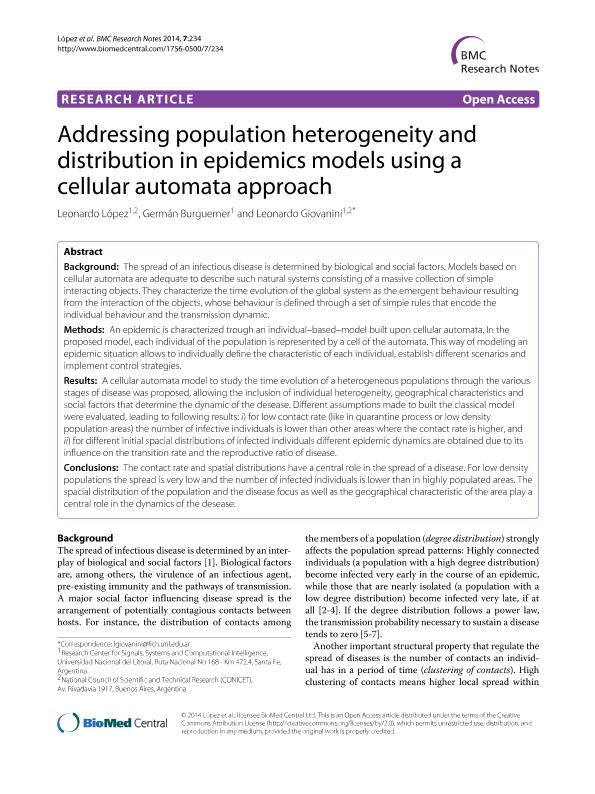Artículo
Addressing population heterogeneity and distribution in epidemics models using a cellular automata approach
Fecha de publicación:
02/2014
Editorial:
Biomedical Central
Revista:
BMC Research Notes
ISSN:
1756-0500
Idioma:
Inglés
Tipo de recurso:
Artículo publicado
Clasificación temática:
Resumen
BACKGROUND: The spread of an infectious disease is determined by biological and social factors. Models based on cellular automata are adequate to describe such natural systems consisting of a massive collection of simple interacting objects. They characterize the time evolution of the global system as the emergent behaviour resulting from the interaction of the objects, whose behaviour is defined through a set of simple rules that encode the individual behaviour and the transmission dynamic. METHODS: An epidemic is characterized trough an individual–based–model built upon cellular automata. In the proposed model, each individual of the population is represented by a cell of the automata. This way of modeling an epidemic situation allows to individually define the characteristic of each individual, establish different scenarios and implement control strategies. RESULTS: A cellular automata model to study the time evolution of a heterogeneous populations through the various stages of disease was proposed, allowing the inclusion of individual heterogeneity, geographical characteristics and social factors that determine the dynamic of the desease. Different assumptions made to built the classical model were evaluated, leading to following results: i) for low contact rate (like in quarantine process or low density population areas) the number of infective individuals is lower than other areas where the contact rate is higher, and ii) for different initial spacial distributions of infected individuals different epidemic dynamics are obtained due to its influence on the transition rate and the reproductive ratio of disease. CONCLUSIONS: The contact rate and spatial distributions have a central role in the spread of a disease. For low density populations the spread is very low and the number of infected individuals is lower than in highly populated areas. The spacial distribution of the population and the disease focus as well as the geographical characteristic of the area play a central role in the dynamics of the desease
Palabras clave:
Cellular Automata
,
Epidemy
,
Population Heterogenity
,
Public Health
Archivos asociados
Licencia
Identificadores
Colecciones
Articulos(CCT - SANTA FE)
Articulos de CTRO.CIENTIFICO TECNOL.CONICET - SANTA FE
Articulos de CTRO.CIENTIFICO TECNOL.CONICET - SANTA FE
Citación
López, Leonardo Rafael; Burguerner, Germán; Giovanini, Leonardo Luis; Addressing population heterogeneity and distribution in epidemics models using a cellular automata approach; Biomedical Central; BMC Research Notes; 7; 2-2014; 234-245
Compartir
Altmétricas




